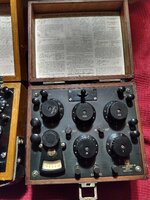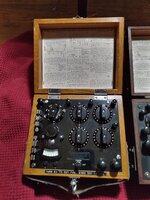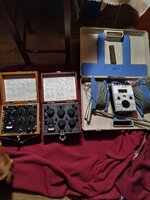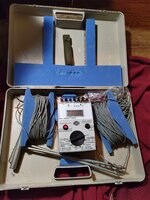ToddB64
Active member
Greetings!

I found the following statements related to the title on the Internet and they seem to suggest that it would be beneficial to metal detect during cool or cold weather to gain improved flow of electrical current in metals, as the inverse result of lower ohms or resistance.
I've been involved in the hobby of metal detecting for over 16 years and this is my first time to come across information leading me to this conclusion. Since I haven't been a fan of cold temperatures in my latter years, I haven't done enough metal detecting in cold weather to gauge if there is in fact a positive improvement when the ground and any metal targets in the ground are cool or cold.
Your opinions on my conclusion and/or your personal experiences of metal detecting in cold vs the warm time of year would be appreciated.
How does temperature affect current and resistance?
Temperature affects how electricity flows through an electrical circuit by changing the speed at which the electrons travel. This is due to an increase in resistance of the circuit that results from an increase in temperature.
The effect of heat on the atomic structure of a material is to make the atoms vibrate, and the higher the temperature the more violently the atoms vibrate. The more the atoms jostle around in the material, the more collisions are caused and hence the greater the resistance to current flow.
For metals, the thermal conductivity is mainly a function of the motion of free electrons. As the temperature increases, the molecular vibrations increase (in turn decreasing the mean free path of molecules). So, they obstruct the flow of free electrons, thus reducing the conductivity.
Thanks,
ToddB64

I found the following statements related to the title on the Internet and they seem to suggest that it would be beneficial to metal detect during cool or cold weather to gain improved flow of electrical current in metals, as the inverse result of lower ohms or resistance.
I've been involved in the hobby of metal detecting for over 16 years and this is my first time to come across information leading me to this conclusion. Since I haven't been a fan of cold temperatures in my latter years, I haven't done enough metal detecting in cold weather to gauge if there is in fact a positive improvement when the ground and any metal targets in the ground are cool or cold.
Your opinions on my conclusion and/or your personal experiences of metal detecting in cold vs the warm time of year would be appreciated.
How does temperature affect current and resistance?
Temperature affects how electricity flows through an electrical circuit by changing the speed at which the electrons travel. This is due to an increase in resistance of the circuit that results from an increase in temperature.
The effect of heat on the atomic structure of a material is to make the atoms vibrate, and the higher the temperature the more violently the atoms vibrate. The more the atoms jostle around in the material, the more collisions are caused and hence the greater the resistance to current flow.
For metals, the thermal conductivity is mainly a function of the motion of free electrons. As the temperature increases, the molecular vibrations increase (in turn decreasing the mean free path of molecules). So, they obstruct the flow of free electrons, thus reducing the conductivity.
Thanks,
ToddB64






